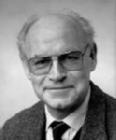telefunken: E52 (E 52) / T8K44 (T 8 K 44); 'Köln'
telefunken: E52 (E 52) / T8K44 (T 8 K 44); 'Köln'

TELEFUNKEN E52 KÖLN OVERVIEW
History:
Empfänger 52 was specified by the Reichsluftfahrtministerium (RLM) in 1939 as one in a series of five similar receivers covering the entire frequency spectrum from LF to UHF, intended for use in the Luftwaffe ground stations, but also for other services and authorities. A request for quotation went out to a few German electronics manufacturers and Telefunken developed and built a prototype of the short wave receiver Köln in the beginning of 1941. Telefunken was chosen to manufacture the series of receivers according to their specification ”Luftboden-Empf.-Programm 2 – 7500 m für die Bodenausrüstung der deutschen Luftwaffe”, Telefunken Berlin-Zehlendorf 5.5.1941.
Out of four specified receivers E51 Leipzig (LF), E52 Köln (HF), E53 Ulm (VHF) and E54 Kulm (UHF) only Köln was built in large series. In total around 2500 receivers were built from July 1942 to March 1945. The E52 was made in 10 models, of which the E52a-1 (simplified with automatic tuning) and E52b-2 (simplified with manual tuning and unified scale) were the most common. Of all the E52s built there are probably 300 - 500 left, of these perhaps 50 in there original state.
The receiver is modularised, the modules are mounted in a moulded aluminium chassis and all connections between the modules are through connectors in a backplane! Both the construction and the performance were far ahead of its time. Only one type of valve, the RV12P2000, was used in the receiver except for the power rectifiers. The intention was that all modules and valves should be interchangable in the field without the need for realignment. The first test series of around 20 receivers was made in Sachsenwerk in Radeberg from July 1942 of the simplified type E52a-1 and possibly also the type E52b-1. The manufacture was not up to speed until the beginning of 1943. The assembly and alignment was made in Sachsenwerk Niedersedlitz while the modules were made in several different electronics industries.
Receiver data:
The receiver is an advanced single superheterodyne with two RF stages, mixer/local oscillator, three IF stages, detector/BFO/AF amplifier and an output stage for headphones. In total there are 6 tuned circuits in the RF/mixer/oscillator part and the receiver has very high sensitivity and selectivity. The IF stages have a 6-circuit filter plus 4 tunable circuits in a variable crystal filter, the bandwith is variable from +/- 5 kHz down to +/- 200 Hz @-3dB with very steep slopes, damping 100 times at +/- 10 kHz in wide. The tuning has a coarse scale and a fine scale projected from a micro photo disc with very high resolution and accuracy. The oscillator has very accurate temperature compensation and thus high stability. Frequency coverage is 1.5 to 25 Mhz in five bands, the sensitivity for AM 3 - 5 uV, CW wide 1.0 uV and CW narrow 0.3 uV for 5 V output. Mirror frequency damping is at least 50000 and the IF damping is better than 100000 at 1.5 MHz. The stability is better than 30x 10E-6/degree C, that is 30 Hz/MHz/degree C for a freerunning oscillator! Even today this is competitive against many modern receivers comparing sensitivity, selectivity and stability.
Variants:
Type Ln-number Remarks
E52a 21000 Motorised tuning
E52b 21000-1 Manual tuning
E52c 21000-2 Dust proof special type, like E52a
E52d 21000-3 Simplified, motorised, special
tuning, recorder output
E52a-1 21000-4 Simplified, motorised tuning
E52b-1 21000-5 Simplified, manual tuning
E52b-2 21000-6 Simplified, manual tuning, unified scale
E52b-3 21000-7 Simplified, special manual tuning
E52a-2 21000-8 Simplified, motorised tuning, unified scale
E52b-4 21000-9 Simplified, manual tuning, unified scale, SSB, steel condensors
It should be pointed out that there is no absolute right or wrong when it comes to the original state of the different models. The receiver was continually changed and the borders between the models are floating. The modules were modified and exchanged between the receivers for repair, there can be a-modules in b-, c- and d-models and vice versa. You can find components in the schematic diagram for E52-b2 for which there is a remark in the parts list ”erscheint nicht”, does not exist!
For more details and references, please visit my web pages at http://goto.glocalnet.net/bosradio
To thank the Author because you find the post helpful or well done.
E 52 and Others
Dear Mr. Samuelson,
You have compiled a real valuable summary on E 51 ... E 55 receivers of which I also have great interest.
At our RKK Radio Museum in Moscow, Russia, we have on display three Telefunken receivers of their "Luftboden-Empfänger-Programm" --- two "Köln" receivers (E 52a and E 52a1) and pretty rare "Ulm" E 53b.
You may have a look at each of them if you follow links below:
http://www.rkk-museum.ru/vitr_all/332_e.shtml for E 52a (Ln 21000)
http://www.rkk-museum.ru/vitr_all/821_e.shtml for E 52a1 (Ln 21000-4)
http://www.rkk-museum.ru/vitr_all/331_e.shtml for E 53b (Ln 21001-1)
As you may have noticed, there is a poster on top of E 53 explaining (in Russian of course) basic principles of Luftwaffe receiver order which was inplemented as Telefunken "Luftboden-Empfänger-Programm". And there are only four RX, from "Leipzig" E 51 to "Kulm" E 54.
I have never heard of "Ulm F" being "E 54" while "Kulm" being "E 55".
In all the documents I have in my possession, both "Ulm" and "Ulm F" (with TV reception capability) were identified as "E 53".
Can you refer me to a document from which you have collected information about five different receivers (i.e. E 51 to E 55), not four ??
In case I feel you are right, I will have to redo my good nice poster on top of E 53...
== == == == ==
I was surprised also to see on your E 52a1, the "Tonhöhe" adjustment button. This was something new to me to see it.
Currently we are discussing my brand new acquisition (actually a New Year's present) of one more "Köln" in a pretty "modified" (verbastelt) condition painted Kriegsmarine grey --- so there was even suggested it might be very, very rare Kriegsmarine T 8 K 44. (I do not believe in such a collector's good luck anyway...)
On the way, a guy from Lithuania has submitted a picture of his "Köln" which should be either E 52a or E 52a1 because the "Rasten" table was there. Yet the left top cover was closed on the picture so we couldn't see whether there was an instrument and one extra tube on the top left.
So the best suggestion was that this receiver must be "E 52a1" because there was no "Tonhöhe" adjustment on it --- exactly like on my E 52a1 which is in a perfect condition (not verbastelt).
But with your picture, I need to reconsider this suggestion.
Would you mind if I will place your picture to the Russian forum (CQHAM.RU) where we are discussing the E 52's ??
73 - Valery (Walt) Gromov, RA3CC.
To thank the Author because you find the post helpful or well done.
E54 and E55?

According to a Telefunken-Leaflet as of May 1941, there were 4 receiver types in their program:
E51 "Leipzig" 40-1600kHz prototypes available
E52 "Köln" 1,5-25MHz prototypes available
E53 "Ulm" 24-65MHz in development
E54 "Kulm" 60-150MHz" projected
Later on the list looked like this:
1941 E51 "Leipzig" cancelled
1941/43 E52 "Köln" mass-production
1942/43 E53a "Ulm A" production, motor-tuning
1944/45 E53b "Ulm A" hand-tuning
1944/45 E54 "Ulm B" now 21,5-120 MHz, start of series production
So the originally planned E54 "Kulm" was changed to E54 "Ulm B" with the new range 21,5-120MHz.
Those Informations are from the book "Die deutschen Funknachrichtenanlagen bis 1945, Band 2" issued by "Telefunken-Systemtechnik Ulm 1990"
An E55 is not mentioned in this book!
Best regards
Thomas
To thank the Author because you find the post helpful or well done.
E55

Thanks to Valery and Thomas for your replies! It seems I have made a mistake when I counted five receivers and named one E55 (shame on me!!!). I don´t really know how this happened, if I read it somewhere on the Internet or made the mistake myself counting Ulm and F-Ulm as different models (the text was first written in my notes more than a year ago). As I cannot find the source I can only admit you must be right and I will correct my entry. Thanks!
As I pointed out in my text the receiver was continously changed during production. This is very true with the BFO module which was made in at least 4 variants. All had crystal control but only 2 had manual tuning with ca +-4 kHz range. The early units had the manual function maneuvered with a knob concentric with the volume knob, soon the units were made only for screwdriver tuning. Later the manual function was only partly wired and in late production the components were removed entirely.
My receiver had the second/third variant with screw driver tuning but not fully wired! I have since wired it and modified it with a knob for easy maneuvering when listening to SSB stations. The receiver is definitly an a-1 and the panel is engraved with TONHÖHE. I believe they stopped engraving this some time during the production of the a-1 as they changed the BFO module.
Valery (and others), please feel free to use any of my pictures from my home page for discussions in your forum!
Regards Bo S.
To thank the Author because you find the post helpful or well done.